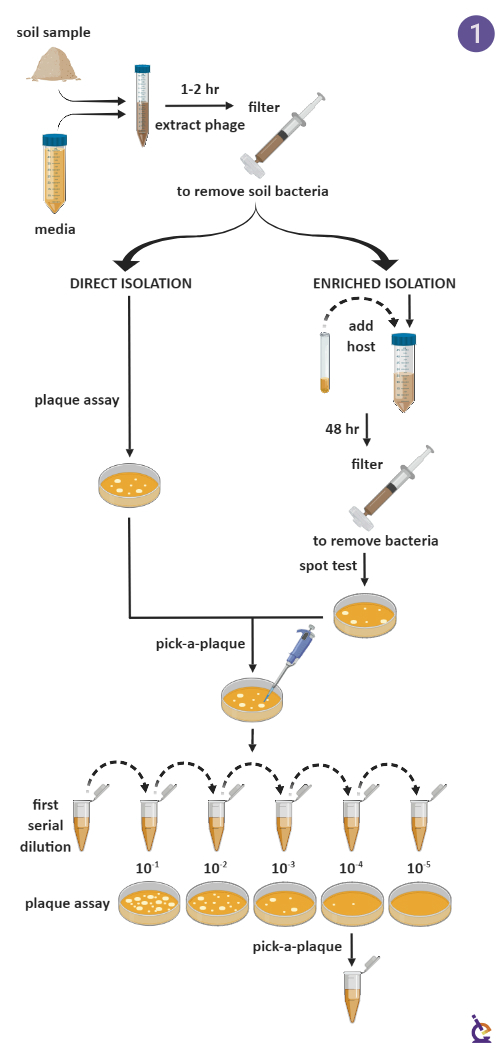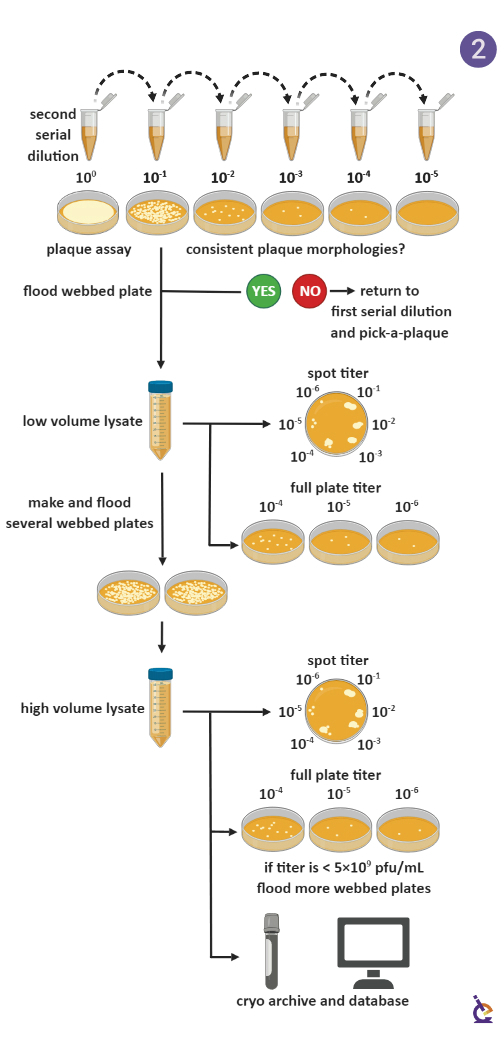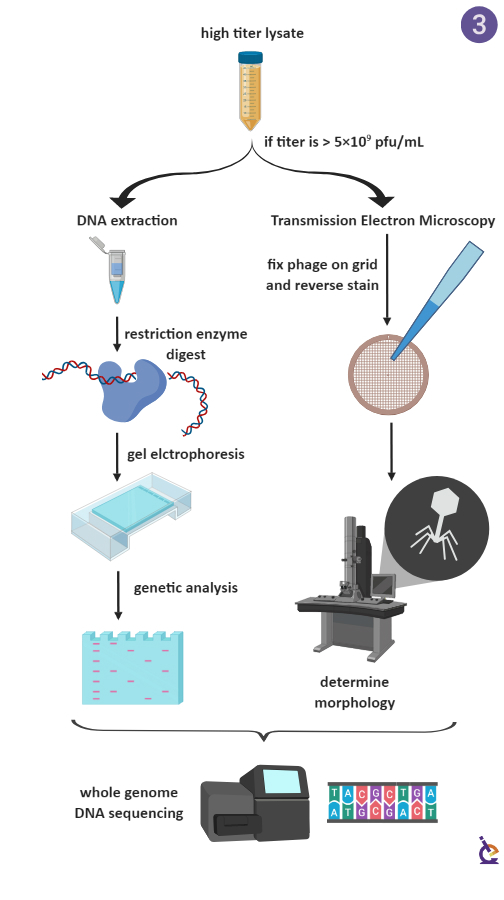Virus Isolation
Virus Isolation Course
What is it?
The Virus Isolation course is the first part of the two-semester Phage Discovery Program.
This course has helped me appreciate science in a way I don’t think a traditional taught course would.
Virus Isolation Overview
Your content goes here. Edit or remove this text inline or in the module Content settings. You can also style every aspect of this content in the module Design settings and even apply custom CSS to this text in the module Advanced settings.
Virus Isolation Flow Chart
Phage Isolation
Phage Purification and Amplification
Phage DNA and Morphology
Lab Safety
Overview
This course begins by reading the Phage Discovery Guide on Lab Safety for some universal guidelines, such as appropriate dress,
Electronic Devices
This laboratory has dedicated laptops for each student research group to access the Phage Discovery Guide and this website for recording in the online electronic lab notebook. The laboratory has dedicated digital cameras and ink markers for labeling and taking images of tube contents, plaques, and gels. No laboratory electronic devices should leave this laboratory because of contamination possibilities. Further, no personal electronic device use allowed inside this laboratory.
Personal Protective Equipment (PPE)
This laboratory has available disposable lab coats and gloves of all sizes. If your PPE becomes contaminated with a biological agent or chemical, dispose of it in the available autoclave bags. This laboratory has available two sizes of lab safety glasses. Store clean PPE in your lab space cabinet. Return lab safety glasses to the lab manager after each lab session for sanitation and reuse. No exiting this laboratory while wearing this PPE because of contamination possibilities.
Biological Agent
This laboratory operates as a Biosafety Level 1 (BSL-1) environment. Bacterial hosts used in the lab are Risk Group 1 (RG-1) organisms Mycobacterium smegmatis mc2 155 and Microbacterium foliorum. Store culture plates and tubes containing biological agents in secondary containment bins. No biological agents should leave this laboratory, including contaminated material.
Disposal of Glass Culture Tubes
This laboratory requires discarding all glass culture tubes into the red biohazards sharps container. No other material should go into this container.
Disposal of Culture Plates, Tubes, Syringes, Filters, Pipettes, and Pipette Tips
This laboratory requires discarding all non-glass disposable material that was in contact with a biological agent into the available autoclave bags. No other material should go into this container, such as non-contaminated wrappers or packaging.
Required Training Courses
CITI Program
116651: Basic Introduction to Biosafety
Texas A&M University System TrainTraq
2111743 : Lab Safety
2112788 : Biosafety Level 1 Training
Reporting Biosafety Concerns
By email at [email protected]
By phone at 254-968-1647
Record Keeping
Aseptic Technique
Collecting Environmental Samples
Direct Isolation
Protocol 5.2 »
x
Plaque Assay
Picking a Plaque
Protocol 5.4 »
x
Enriched Isolation
Spot Test
Plaque Assay for Purification
Serial Dilutions
Collecting Plate Lysates
Spot Titer
Protocol 6.4


